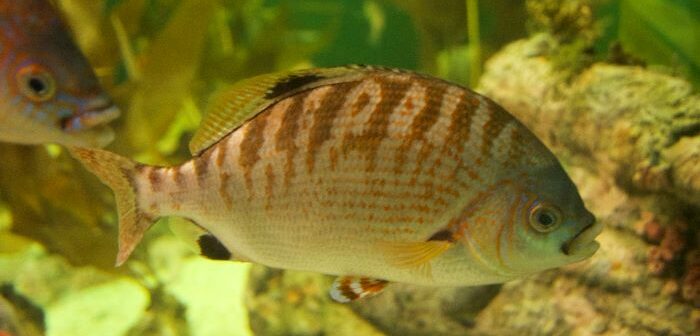University of St Andrews experts become a part of international team exploring human impact on biodiversity
Researchers from the Centre for Biological Diversity at the University of St Andrews, working with international partners including the German Centre for Integrative Biodiversity Research (iDiv) and Martin Luther University Halle-Wittenberg (MLU), have discovered that widespread species tend to benefit from anthropogenic changes and increase the number of sites they occupy, whereas more narrowly distributed species decrease.
Their results, published in Nature Communications today (Monday 20 March), are based on an extensive dataset of more than 200 studies and provide evidence that habitat protection can mitigate some effects of biodiversity change and reduce the systematic decrease of small-ranged species.
Every living species on the planet has its own unique geographic range, with some species occurring over large parts of the globe, while others inhabit only a few select areas. The question scientists wanted to answer was whether the range size of a species influences how it responds to human activities and changes in the number of sites it occupies through time.
The report’s co-authors Professor Maria Dornelas and Professor Anne Magurran, from St Andrews School of Biology, explained that the research team set out to evaluate the connection between the size of a species’ range and the changes in their regional occupancy over time.
To do so, researchers used an extensive dataset of 238 studies that monitored plant and animal species assemblages from across many sites for 10-90 years. From these time series, they were able to determine which species were increasing in the numbers of sites they occupied through time, which were decreasing in their site occupancy, and which stayed the same.
They then wanted to compare the trends of species to the size of their ranges to see if there was a connection. To determine the range sizes of nearly 19,000 species from across the tree-of-life that were identified in the time series, they used data from the Global Biodiversity Information Facility (GBIF), which includes data on the occurrences of species from across the world, including data collected from popular smartphone apps like iNaturalist and eBird.
The researchers found that on average across all studies species with larger ranges tended to increase in occupancy through time, whereas small-ranged species decreased. For example, in a study from northern Australia, species that were native to only a small part of the region, such as red cabbage palm (Livistona mariae), lost ground from when they were first surveyed in the 1990s, while more widely distributed species, such as Polynesian arrowroot (Tacca leontopetaloides) and diamond burbark (Triumfetta rhomboidea), were found at more sites. Likewise, narrowly distributed fish in the kelp beds off the coast of Santa Barbara, California, like the rainbow perch (Hypsurus caryi) were found at fewer sites since monitoring started in 2000, while more widespread species like Scropaenichthys marmoratus occurred at more sites.
“One reason could be because widespread species tend to have wider niche breadth, meaning that they live in many different kinds of habitats. These species can more rapidly disperse across sites than more narrowly distributed species, and thus are more likely to persist or even increase in response to global environmental changes,” says first author Dr Wubing Xu from iDiv and MLU.
These relationships were stronger in marine than in terrestrial and freshwater realms. “One reason could be that marine species are often more sensitive to environmental changes such as climate warming,” explains Dr Xu.
These results also help resolve previous discrepancies and build on the work of an earlier study led by Professor Magurran and Professor Dornelas. The previous study compiled time series of biodiversity data from across the world into a database they called BioTIME. The new study has now added many new datasets to that compilation.
Professor Dornelas said: “Our work with the first versions of BioTIME showed no clear general trend one way or the other in local species richness, but this does not mean the world is not changing and that humans are not having a dramatic impact on biodiversity.”
“We saw substantial changes in species composition, and what is nice about these new results is that we were able to show that these changes are associated with characteristics of the species that are winning and losing through time. It is clear that to understand biodiversity change we need to use multiple metrics at multiple scales.”
To date, ~17% of terrestrial areas and inland waters and ~8% of coastal and marine areas are designated as ‘protected’ in some way. Recent international agreements at the United Nations Biodiversity Conference aim to increase this substantially in the next decade. By comparing the trends inside and outside of protected areas, the researchers found that changes in occupancy were less extreme in terrestrial protected areas.
For example, the investigators found that more narrow-ranged bird species like Little bustard (Tetrax tetrax) increased their occupancy through time in an area given special protection status in Portugal, whereas they were declining in a nearby intensively farmed region.
Senior author Professor Jonathan Chase from iDiv and MLU added: “Reducing anthropogenic pressures by establishing protected areas can temper the decreases in occupancy of small-ranged species that we often observe.
“This is why it is imperative that the international community follow through on its promise to increase the amount of habitat protected and restored across the world.”

